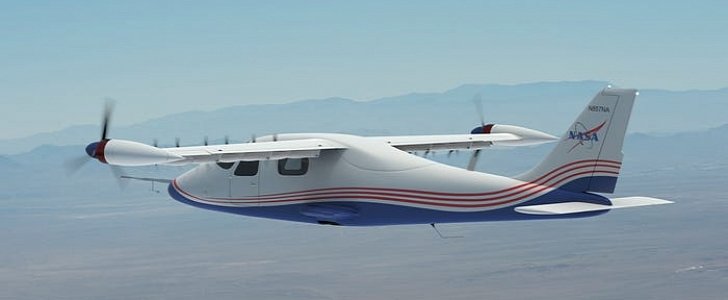In October of last year, the American space agency announced it is joining the global race for the development of an electrically-powered aircraft as part of the world-wide effort to curb emission levels. Half a year or so later, the testing program is in full swing.
Despite the fact the prototype airplane falls under the experimental airplane category, a family of machines that over the years led to the development of some impressive technologies, NASA did not actually build it from scratch, as it usually does, but used an existing platform.
The airplane itself is a gutted Italian Tecnam P2006T. The plane’s combustion engines were stripped out and in their place an electric powertrain was adapted. The machine was given the X-57 Maxwell name, and soon after its introduction it became the first piloted NASA X-plane to be created in two decades, beating the X-59 to the punch.
Handling the conversion of the Tecnam was California-based Empirical Systems Aerospace. The company fitted twelve 60-kilowatt motors along the wings, helping along two cruise motors. The motors get their power from two lithium-ion batteries with a capacity of 23 kWh of power.
The aircraft is presently on location at the Armstrong Flight Research Center in Edwards, California, where the first test flights are being set up. The goal is to have it eventually go up to 14,000 feet and cruise at 172 mph.
In doing so, NASA plans to “develop certification standards for emerging electric aircraft markets, including urban air mobility vehicles, which also rely on complex distributed electric propulsion systems.” All the findings in the project will be shared with both regulators and industry players.
“We plan to rapidly share valuable lessons learned along the way as we progress toward flight testing, helping to inform the growing electric aircraft market,” said at the time of the project’s announcement X-57 Project Manager Tom Rigney.
The airplane itself is a gutted Italian Tecnam P2006T. The plane’s combustion engines were stripped out and in their place an electric powertrain was adapted. The machine was given the X-57 Maxwell name, and soon after its introduction it became the first piloted NASA X-plane to be created in two decades, beating the X-59 to the punch.
Handling the conversion of the Tecnam was California-based Empirical Systems Aerospace. The company fitted twelve 60-kilowatt motors along the wings, helping along two cruise motors. The motors get their power from two lithium-ion batteries with a capacity of 23 kWh of power.
The aircraft is presently on location at the Armstrong Flight Research Center in Edwards, California, where the first test flights are being set up. The goal is to have it eventually go up to 14,000 feet and cruise at 172 mph.
In doing so, NASA plans to “develop certification standards for emerging electric aircraft markets, including urban air mobility vehicles, which also rely on complex distributed electric propulsion systems.” All the findings in the project will be shared with both regulators and industry players.
“We plan to rapidly share valuable lessons learned along the way as we progress toward flight testing, helping to inform the growing electric aircraft market,” said at the time of the project’s announcement X-57 Project Manager Tom Rigney.















